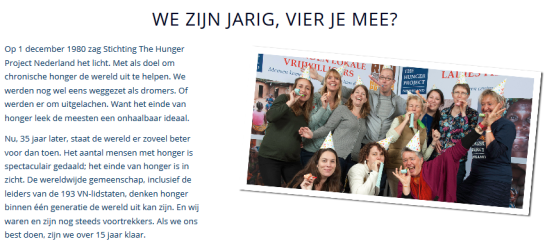I am quite neutral on the questions whether or not there is a Brexit and / or the UK breaks up. It is all up to the people in the UK what they wish to do.
My view is only that what we see isn’t democracy but political abuse. The data of the June 23 outcome are generally known, and summarised in the Appendix below. These data still leave unclear what UK voters really think. It is utterly false when politicians and their lawyers claim that the outcome represents the “views by the voters”.
This weblog entry on the Brexit referendum outcome has two aspects:
- First there is an advice for young UK on safeguarding their future.
- Secondly, there is the scientific outrage that voting theory has been neglected. Let me suggest to my fellow scientists to protest en masse to the political world that this Brexit referendum was & is political abuse, with deliberate neglect of scientific results on voting theory. Civilisation should not let such developments be determined by such political savagery.
Let us start by observing that the Brexit referendum question neglected the possible break-up of the UK. This isn’t hindsight but people warned for this early on, e.g. William Hague in December 23 2015 just when the referendum question was published. One might argue that people thus were warned, and if they still voted for Leave then they must have included the risk of a break-up. Thus we would live in the best-possible-world (Candide), and it is up to Scotland and Northern Ireland to decide now. However, science has shown that one cannot really interprete referenda in such manner. For example, foreign secretary of Sweden Margot Wallstrom warned on June 12 that the UK Leave might mean the end of the EU. Perhaps she intended to stimulate the turnout of Remain, but, if she was heard at all, she likely encouraged the turnout of Leave who wanted to destroy the EU too, and helped them forget about the break-up of the UK. Thus, it is too rosy to hold that people in the ballot box are fully informed and can deal well with misleading referendum questions.
For young UK (age < 50 years)
An advice for young UK who face Brexit is to study the basic theory of elections and then organise a new decision, done properly.
Four texts to study are:
- the former weblog text on Brexit
- my online book Voting Theory for Democracy
- a paper that compares district representation (DR) as in the UK with proportional representation (PR) as in Holland. A), with a summary that appeared in Mathematics Teaching 222 in the context of the 2011 UK referendum on “Alternative Vote”.
- a warning (in Dutch) to be careful with the mathematics of voting schemes.
Let us consider, for the sake of argumentation, a potential new referendum that might combine the options of Remain / Leave with UK / EU, so that voters can express better whether or not they want to leave the EU at the possible cost of a break-up of the UK. The votes on remaining or leaving the UK must be aggregated for the four areas separately, with perhaps the creation of England as a political entity too.
 Would this scheme work ? The scheme doesn’t quite deal with conditionals, like (England’s ?) “Leave the EU provided that others don’t leave the UK” or (Scotland’s ?) “Remain in the UK provided that the UK remains in the EU”. (1) Opinion polls “help” people to get an idea what others will vote, but such polls can be quite misleading. (2) A scheme is to let voters rank their preferences. For example, a youngster might rank A > C > B > D and an elderly person might rank B > D > A > C, but this ranking doesn’t quite resolve conditionals, e.g. that might cause strategic voting. And what about other issues, like on immigration ?
Would this scheme work ? The scheme doesn’t quite deal with conditionals, like (England’s ?) “Leave the EU provided that others don’t leave the UK” or (Scotland’s ?) “Remain in the UK provided that the UK remains in the EU”. (1) Opinion polls “help” people to get an idea what others will vote, but such polls can be quite misleading. (2) A scheme is to let voters rank their preferences. For example, a youngster might rank A > C > B > D and an elderly person might rank B > D > A > C, but this ranking doesn’t quite resolve conditionals, e.g. that might cause strategic voting. And what about other issues, like on immigration ?
This hypothetical case fits the general scientific finding that referenda are predominantly no good way for collective decision making. It is remarkable that this isn’t general knowledge or even part of common sense.
Best seems that people vote for parties and that parties have negotiations in Parliament. However, this also depends upon whether Parliament has been chosen by DR or PR.
- The political tensions in the UK rose likely because the UK has DR instead of PR. The political system in the UK excludes minorities and reduces political competition, whence non-represented minorities grow ever more extreme.
- The Dutch system with PR includes minorities and enhances competition for votes. PR forces parties to compromise, and bearing responsibility reduces extremes.
- Referenda are normally PR and used to correct errors of DR, but that doesn’t make referenda true corrections.
Therefor, the best solution would be to have a decision by Parliament selected in PR manner, or, paradoxically, given that this Brexit referendum has been allowed, have a nullifying referendum. One would put four issues on ballot:
- “The Brexit referendum question was too simple, and the outcome is annulled.”
- “Adopt for Parliament a system of Proportional Representation (PR) like in Holland, with a Prime Minister and cabinet appointed by Parliament.”
- “Adopt a constitutional Economic Supreme Court (ESC).” The ESC provides necessary checks on the quality of information for policy making. For this, see DRGTPE, and this memo in the RES Newsletter.
- “If there is an ESC, then also have annual elections.” When the ESC is in place, then one can have annual elections to enhance voting power on preferences, with less risk of political chaos.
These latter two conditions for a modern democracy are still lacking in Holland. Dutch readers are referred to “Democratie & Staathuishoudkunde” (2012).
The political abuse
The New York Times reminded us on June 21 2016 that David Cameron used the referendum to resolve a political fight in his own party.
“In 2013, besieged by the increasingly assertive anti-European Union wing of his own Conservative Party, Mr. Cameron made a promise intended to keep a short-term peace among the Tories before the 2015 general election: If re-elected, he would hold an in-or-out referendum on continued British membership in the bloc. But what seemed then like a relatively low-risk ploy to deal with a short-term political problem has metastasized into an issue that could badly damage Britain’s economy, influence the country’s direction for generations — and determine Mr. Cameron’s political fate.”
This use is not necessarily an abuse, since, for example, 52% of the vote legitimise the idea, and these were not party members only. Instead, the abuse is the neglect of voting theory: the misrepresentation of a multidimensional issue by a binary choice. It is like asking “Do you still beat your wife ?” and allowing only a Yes or No, so that when the answer is No then the subsequent conclusion is: “Ah, so you admit that you did beat her before !”
Surprisingly, both David Cameron and Nigel Farage got away with the misrepresentation in the question in this plebiscite. (1) There was not enough discussion on this irresponsible simplification of the issues. At least the possibility of the break-up should have been included, see the early warning by William Hague. (2) Whatever the question up for vote, a referendum can be hijacked for another populist cause, as happened in this case with immigration. Angry voters send a vote-of-no-confidence to the government whatever the consequences.
For scientists
The case for scientific outrage is obvious. It is remarkable that we haven’t heard much from UK scientists on this. Stephen Hawking warned about Brexit but didn’t say that the referendum question is silly and dangerous.
There is this open letter of June 14 by a long list of scientists who protest:
“A referendum result is democratically legitimate only if voters can make an informed decision. Yet the level of misinformation in the current campaign is so great that democratic legitimacy is called into question.”
Curiously, however, this letter doesn’t make the point that the referendum neglects voting theory, since the very question is misleading w.r.t. the complexity of the issue under decision. Would these scientists be willing to admit this ex post ?
There is a critical article in the New Scientist of June 1 for example, but the issue of misrepresentation isn’t quite mentioned. The reporters adopt the frame that the question is sound and the voters are irrational, while the truth is rather that the referendum question is a misrepresentation and that voters are upset (albeit unconsciously) by being boxed into a corner, and by being given responsibility but no means of control (the recipe for stress).
“THE EU referendum could be the most irrational yet. Uncertainty over consequences, and contradictory economic and political information, mean that voters will be swung even more than usual by feelings and biases that have nothing to do with the issues at stake.” (Michael Bond, Jacob Aron, )
It is well-accepted by students of voting theory that referenda can by abused by politicians for their own agenda. Thus the scientific outrage should be felt by many more scientists.
Insert: The Queen: “Why did nobody notice it?”- in 2008 at the financial crisis
After the financial crisis in 2008, the UK Queen is reported to have asked: “Why did nobody notice it?” (Telegraph 2008, Guardian 2012). There is the plain answer that some people warned but were not listened to, and this is the ancient issue of Cassandra or perhaps The Boy Who Cried “Wolf”. See e.g. this discussion. The same question can be asked now w.r.t. the referendum: why did not more people warn that the referendum and / or its question wasn’t sound.
Potentially, organising a new referendum would better show how the people in the UK think about a break-up. There is one catch: it may be impossible to restore the status quo ex ante. Now that Scotland has discovered that it might be dragged along by England into undesirable waters, perhaps Scotland still wishes a new referendum on independence, even when the June 23 referendum is annulled and when a new referendum confirms that the UK would remain in the EU. This is something that someone in the Policy Simulation Room should have seen coming.
Many observers already mentioned that if there would be general elections before a government dares to invoke article 50, then these elections would turn into a repeat referendum too. In that case DR doesn’t quite square with the PR of a referendum, and thus one would rather first have PR and perhaps secondly also split parties in Remain and Leave subparties.
Insert: How the UK Electoral Commission advised on the question
A kind reader informed me that the UK Electoral Commission advised on the referendum question. Looking into this is another mer à boire.
- The Commission has the task to check that even a misleading question is “intelligible”.
- There is a useful discussion about the difference between “remain” and “be”, and whether yes / no creates a bias for people who hate to say no. My impression is that the Electoral Commission deserves a compliment w.r.t. the clarity about the question, so that everyone can see that it was a misleading question.
- However, the Commission entirely overlooks the possibility of including a “None Of The Above” (NOTA), while this inclusion might have tickled people into wondering about the misleading question itself.
- There is no mention that the UK might break up after a Leave outcome. Is it really so that no-one in the UK was aware of this and that the Electoral Commission could neglect this ?
- There were general warnings, like in the section on “Contextual understanding of the European Union” points 3.23-3.27 on page 16:
“3.25 Whilst overall awareness of the UK’s membership of the EU was found to be relatively high, many reported that more contextual information would be required regarding the voting outcomes. Particular queries included what a vote to remain a member would mean in terms of membership status: continuation of current terms of membership or something different? A small number of participants thought that a majority vote to stay would result in the UK becoming a member of the Eurozone.
3.26 There were similar queries about what a vote to leave would mean in terms of membership status: completely leaving the EU or some other form of membership?
3.27 Those who were undecided about how to vote were particularly likely to report a lack of contextual information enabling them to make an informed vote. They reported a lack of clarity regarding what each voting outcome would mean in practice. This is considered in more detail later in this chapter.”
I didn’t find the required details in this chapter. My advice to the Electoral Commission is to refuse to participate in the creation of misleading questions. It is okay to clarify questions, but one should also be aware of voting theory that referenda can be silly and dangerous. At the minimum discuss the inclusion of NOTA. The reason of the referendum is to recover the views of the electorate, and what happens with the view is not only “context” but key information for developing these views.
Insert: Partial agreement with Martin Wolf in the FT
Martin Wolf stated in his “What a Prime Minister Boris Johnson should do next” (FT June 28 2016), that I only saw after basically completing this text:
“Might it be possible to abort the entire process? Legally, yes. As Brexiters rightly say, the UK is a parliamentary, not a plebiscitary, democracy. The step that must be taken, if the UK is to leave the EU, is for it to issue a declaration under Article 50 of the Lisbon treaty, to trigger the process. In law, a referendum is solely advisory. Only parliament can do this, because only it makes valid law.”
It is a subtle point that many will not have been aware of. The Dutch advisory referendum on the Ukraine had always been communicated as “advisory referendum”, and in the future such clarity would be advisable.
Now, both David Cameron and Jean-Claude Juncker assume that the UK will automatically invoke article 50, and the debate is only about delay (supposedly to the advantage of the UK) or speed (for the EU wishing to have it over with). There are rising tensions. Juncker’s attitude would have been different when Cameron had treated the referendum outcome only as an advice. Today, David Cameron is not present at the informal meeting of the HOSGs, and EU Council website has a statement by the 28 – 1 = 27:
“In their joint statement following the meeting, the 27 leaders announced: “We, the Heads of State or Government of 27 Member States, as well as the Presidents of the European Council and the European Commission, deeply regret the outcome of the referendum in the UK but we respect the will expressed by a majority of the British people. Until the UK leaves the EU, EU law continues to apply to and within the UK, both when it comes to rights and obligations.””
Nigel Farage was jeered and booed at with Juncker’s unkind question “Why are you here ?” when he presented himself in the EU Parliament. It is unkind not to allow Farage his moment of victory and for exporting his message to a wider EU area, and to imply that he was only there for the attendance fee. One should respect that it remains a political view whether one wants more integration or a return to a trade area. With this unkind and non-sportive treatment, one may better understand how Europe got into wars so often in the past. But also Farage did not treat the referendum outcome as an advice only.
Still, I agree with Wolf that the UK still has the option to backtrack. The real question is what would be the convincing argument. The argument must be made convincingly, otherwise tensions in the EU will rise, and businesses will reduce the risk of trading with the UK. For me, the convincing reason lies in the observation that the referendum question is an abuse and neglect of voting theory. For me, it doesn’t matter whether the UK leaves or breaks up, if only the voters have been offered the true options.
Wolf is more worried about the economy, and subsequently considers some options, including re-negotiating on immigration, and starting with:
“After selection of a new leader by the Conservative party, and perhaps even a general election, Prime Minister Johnson might, to paraphrase Emperor Hirohito’s remarks at the end of the second world war, declare that, given the “unexpected” economic damage and the risk of a break up of the UK, the situation “had developed not necessarily to the UK’s advantage”. He might forget the whole thing or, alternatively, call another referendum, merely to make sure the people remained as determined.”
The argument on the Brexit is rather thin, given that the Brexit had been presented as an issue of sovereignty and the monster of the superstate. It belongs to the possibilities that Johnson doesn’t really care much whether the UK is in or out of the EU, and that the Brexit campaign was only a last resort to get Cameron and Osborne out of the way. It is also possible that Johnson might become Prime Minister now and is appalled by the chaos that he has created, and thus becomes willing to change his position. However, it is less likely that the EU will agree with re-negotiating on immigration to try prevent the UK from invoking article 50. Politics might be blackmail but the UK cannot claim a special position w.r.t. the problems in Syria or Africa.
Thus I regard this line of reasoning as not so convincing. Little stops us from combining the principles on voting with the practice of economics. However, why would we complicate a clear issue of scientific clarity on principles of voting with a messy assessment on economics ? For the experts, as Wolf indicates, the economic assessment is not messy, but we lack an Economic Supreme Court, and thus non-economists are lost in the game of guessing who the experts really are, and experience shows that this process actually is quite messy.
David Cameron might have selected his time window till October for mere party politics, but it would provide time indeed to let these arguments percolate. I would not wait for Boris Johnson but rather look to young UK and the world of science.
Insert: Gideon Rachman’s non-belief in a Brexit
Gideon Rachman doesn’t quite believe the Brexit, given some precedents (FT June 27 2016), that I also only saw after basically completing this text.
“In 1992 the Danes voted to reject the Maastricht treaty. The Irish voted to reject both the Nice treaty in 2001 and the Lisbon treaty in 2008. And what happened in each case? The EU rolled ever onwards. The Danes and the Irish were granted some concessions by their EU partners. They staged a second referendum. And the second time around they voted to accept the treaty.”
“Boris Johnson (…) hinted at his real thinking back in February, when he said: “There is only one way to get the change we need — and that is to vote to go; because all EU history shows that they only really listen to a population when it says No.”
“And what kind of new concession should be offered? That is easy. What Mr Johnson would need to win a second referendum is an emergency brake on free movement of people, allowing the UK to limit the number of EU nationals moving to Britain if it has surged beyond a certain level.”
With the EU refugee crisis (an emergency for Syria and a structural problem for Africa), it is not likely that the UK will get such exception, for the other 27 members will not be able to explain this to their constituencies. There doesn’t have to be a concession from the EU. It suffices for the UK to come to terms with voting theory, apologise to the EU for the confusion, and redo the decision making process to find out what it really wants.
A cocktail of uncertainties and possible sources for confusion
The Brexit referendum has the advantage of illuminating various uncertainties and possible sources for confusion.
- My correspondent in The Hague argues that the Brexit outcome injects new energy into society, namely the idea of “getting a life”, and being freed from the suffocating bias by the collective hive. I am reminded of 1914, when people were energised to go to war. Sebastian Haffner‘s book of 1964 still needs an English translation: Die sieben Todsünden des deutschen Reiches im Ersten Weltkrieg.
- One might argue that Scotland voted to remain in the UK in 2014, and thus now has to suffer the cost. The EU might welcome Scotland but might still have greater fear for break-ups like with Catalunya. Overall, my impression is that the nation states of Vienna 1815 still have an important role to play in the immediate future. Eventually a perspective of a “Europe of the Regions” (Heineken map) makes more sense. One could make a plan for the next 25 years for gradual change with both integration and distribution.
- The 2011 UK referendum on “Alternative Vote” was crooked because the proposed system was too complex, likely by wrong advice from mathematicians. There is the curious Dutch D66, liberal democrats who neglect science and prefer DR.
- The demographic breakdown shows that younger people turned out less and were more likely to vote for Remain, while the elderly turned out more and for Leave. Issues are: (1) When people don’t turn out, we don’t know their vote. (2) Are non-voters really indifferent to the outcome or merely confused ? (3) Don’t young people know that elections are important for their future ? (4) Was it relevant that younger people are used to a digital world while the referendum is old technology that the elderly are used to ? (5) When they have regrets, should they sit on the blisters ? (6) Will they be able to understand that this referendum was an outrage and neglect of science, and would they be able to explain this to others ?
- An interesting point is that this Brexit outcome challenges the “one man one vote” principle. In Public Health we oppose “lives saved” to “life years saved”. It matters whether one saves a baby or a 95-year old. See my essay on the Value of Life. In economics we have intergenerational accounting. Potentially one might argue that young people are more affected by a decision like a Brexit than the elderly. The elderly might argue that they know better what is good for their grandchildren. A 95-year old might also argue that the world has a lot of babies but few 95-year olds, and that he or she represents a huge investment in human capital.
- Remarkably, the City of London had a great interest in remaining in the EU, but was caught in the problem that others might (obviously) think that they put their interests before those of the UK. Somehow Finance lost from the Tabloids. A mediating role might have been played by Education, but Education apparently didn’t explain about the political abuse.
Dutch EU Presidency disaster, with Dutch PM Mark Rutte
The Brexit outcome means that the Dutch EU Presidency 2016 is a disaster, under the leadership of Dutch Prime Minister Mark Rutte.
Indeed, even Dutch PR has its problems. The Dutch general elections 2012 might have allowed a coalition under the leadership of Diederik Samsom, with parties PvdA & SP & CDA & D66 & CU & GL & PvdD = 38 + 15 + 13 + 12 + 5 + 4 + 2 = 89 seats in a house with 150 seats, but Samsom preferred a quick deal with Rutte (VVD, 41 seats). Samsom forgot that VVD and PvdA had made rather conflicting campaign promises, so that a coalition was strange, and both are much lower in the polls now (VVD 24, down from 41, PvdA 8, down from 38). In 2017 there are Dutch elections. VVD and PvdA had been hoping that the Dutch economy would be doing well by then, but the Brexit makes this less likely again. However, my advice is that all (decent) parties are represented in the executive of the government too, since being in government helps realism. The selection of the Prime Minister can be done by the Borda Fixed Point method.
Potentially the EU regarded the UK referendum as an internal affair of the sovereign UK. European heads of state or government (HOSG) have been advising the UK voters, but always at some “respectful distance”, and not in town hall meetings as Barack Obama toured the USA. It is part of European folklore to have a European project but while maintaining the outward rituals of sovereignty. This emphasizes the distance rather than the togetherness like in the European Song Festival. The Dutch Presidency should have been more alert on this. People in the UK might argue that there are ample people from other EU nations in the UK, so that there are ample opportunities for discussion, and that the purpose of the referendum is to let the British make up their minds themselves. But why not have town hall meetings with EU HOSGs at various locations in Nigel Farage’s backyard ?
Another comment (lost the reference) was that it was Margaret Thatcher who pushed for the neoliberal agenda, as opposed to the Continent, with the Christian or Social Democratic agendas. This caused the austerity programs and the financial crisis of 2007+ and the call for more austerity. Thus the UK exported the policies to Brussels, about which the Brexiteers complain that those came from Brussels. To this, we might add that Tony Blair proceeded along Thatcher’s path, and assisted in the false pretentions for the invasion into Iraq that eventually caused ISIL and the Syrian refugees to Europe. How blind can you be about your own crookedness ? Also, Mark Rutte has hero worship for Thatcher, and thus was the last person to explain this boomerang to the UK. See what Rutte neglects: my paper on the Cause and Cure of the Crisis.
(PM. Perhaps, however, Rutte has other objectives. Now that the House of Hanover leaves the EU, perhaps the House of Orange has better cards to get adopted as the Imperial House for the EU empire, later to be united with Russia. My correspondent in Moscow informs me that president Putin is already looking at pictures of young Dutch princess Amalia. As Putin intends to rule for a thousand years, the age difference doesn’t bother him. But the Moscow correspondent also states: “Then he swears violently, for he realises that he must also find a diplomatic solution for the MH17 problem.”)
A problem in science
There is a related issue that must be mentioned usefully. For the above, science has a positive role. However, we should not paint a picture that is too rosy. Science can also contribute to political confusion. A problem in science is that here is a common and fundamental misunderstanding w.r.t. the Impossibility Theorem of 1951 by Kenneth Arrow, a mathematician who got the Nobel Prize in 1972 for this theorem and other work. The impossibility theorem might seem complex but is rather simple, for: assume some properties and give a counterexample. The impossibility arises by a simple mechanism, namely by assuming that collective decisions can be built up from voting on pairs of issues. Obviously the world is more complex and one cannot neglect the context. However, mathematicians are very fond of the misconceptions that Arrow created, and political scientists are very fond of acting like they understand the mathematics. Thus there is a serious problem of malpractice in science itself. Cases of this malpractice in Holland are here 1, here 2, here 3. A problematic situation exists in the USA w.r.t. Donald Saari, last year the chairman of the Conference Board of the Mathematical Sciences (CBMS), the union of all mathematical associations. See also the relation of CBMS to the US Common Core in mathematics education.
In 1990, one of my papers at the Dutch Central Planning Bureau (CPB) showed that Arrow confused voting and deciding. The mathematics of his theorem is okay but his interpretation is wrong. One can use pairwise voting results but one should not regard these as decisions. The final decision can only be made when all pairwise results are in and related to each other. A cycle in voting scores translates into collective indifference. When there is a tie, then there must be tie-breaking rules. Thus, democracy is not impossible, but a bit more complex than Arrow suggested. Unfortunately, this paper of mine of 1990 got hit by censorship of science, as also my other papers, including the new approach to resolving unemployment and stagflation. The paper on Arrow’s impossibility theorem has been transformed (partially) into the book Voting Theory for Democracy, but the results on unemployment and stagflation are still importantly much under censorship that should be lifted.
Conclusion
Young UK and scientists all over the world are advised to protest against the political abuse of this Brexit referendum, and it would also help when they start boycotting Holland till the censorship of science by the directorate of the Dutch CPB is resolved.
Appendix. The Brexit referendum outcome
The following data can be found at YouGov (exit poll on ca. 5000 people) and there is a nice graphic at wikipedia (a portal and no source). John Burn-Murdoch at the FT presents a graph that turnout rises with age, from a low 65% for age 30 to a high 80% at age 50 (not copied here).

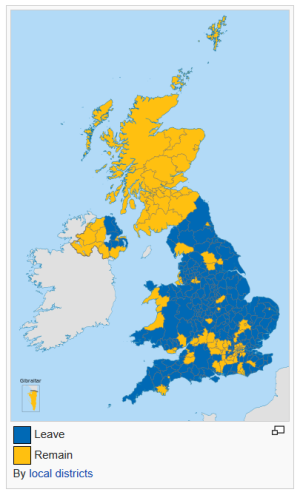
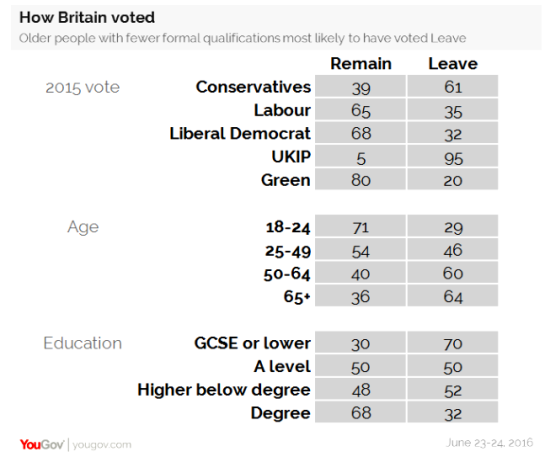

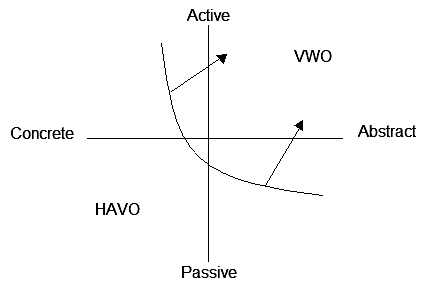
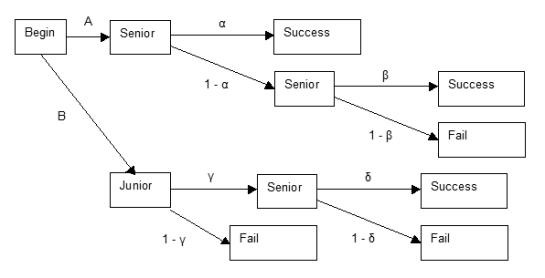
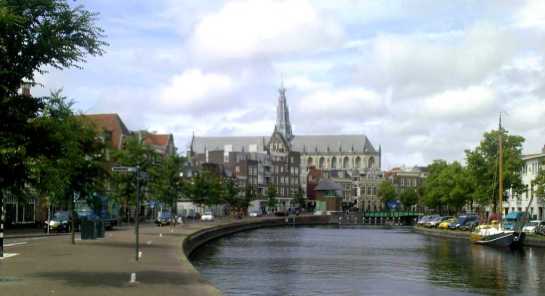
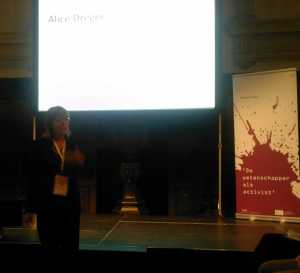
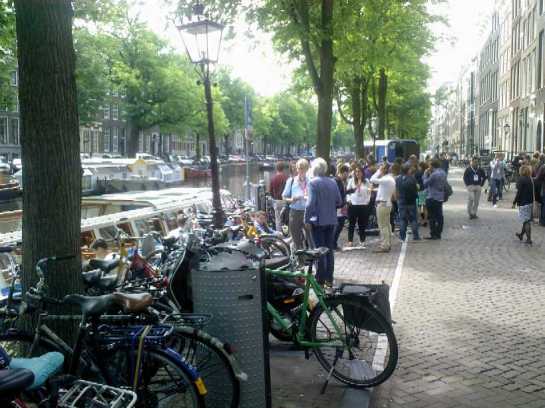
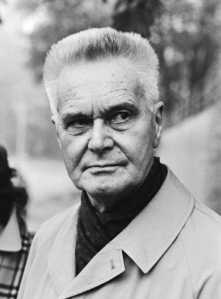
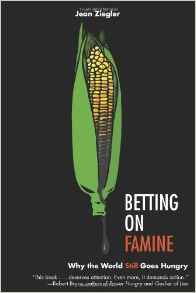 Martin Caparros
Martin Caparros

